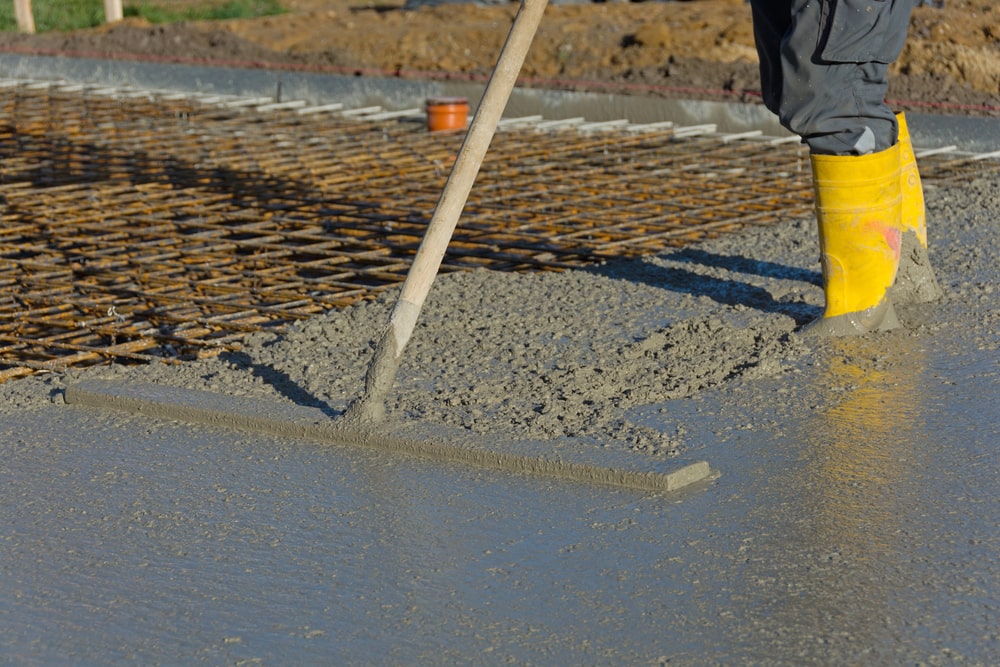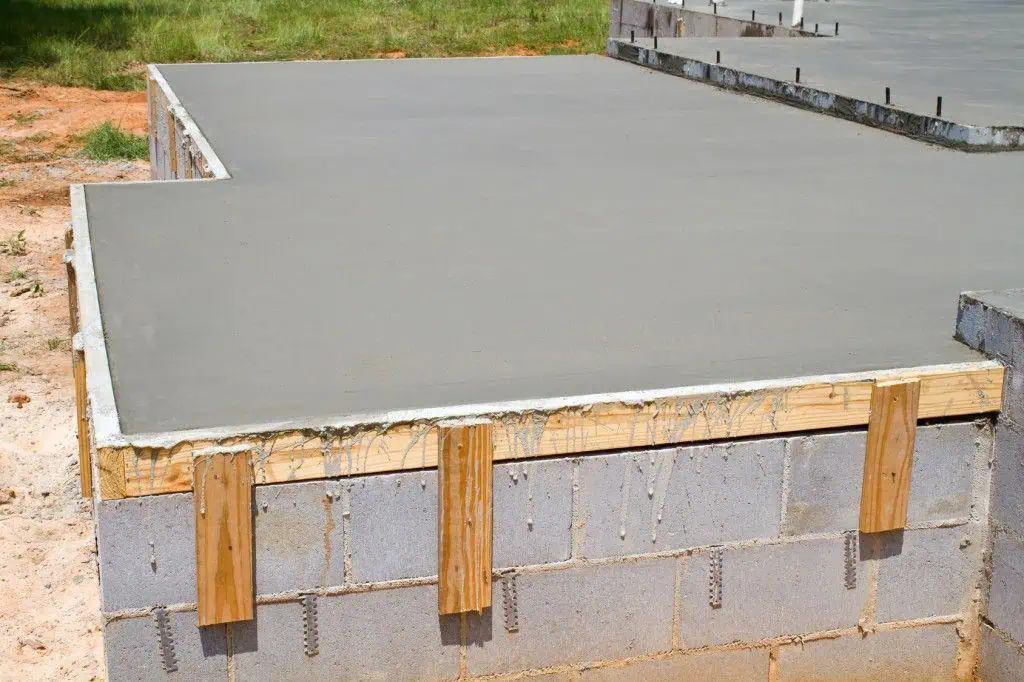
When it comes to building a durable concrete slab, reinforcing with rebar is a game changer. You might think concrete alone is strong enough, but without proper reinforcement, your slab could crack or fail under pressure. Hiring the right concrete contractor is key! Understanding the importance of rebar can save you time and money in the long run.
Using rebar not only enhances the structural integrity of your concrete but also improves its longevity. Whether you’re pouring a driveway, patio, or foundation, knowing how to incorporate rebar effectively makes all the difference. Dive into the world of concrete reinforcement and discover why it’s not just an option—it’s essential for a lasting, reliable slab.
Overview of Rebar in Concrete Slabs
Rebar, or reinforced steel bar, plays a vital role in enhancing the properties of concrete slabs. You can expect concrete to be strong in compression but weak in tension. Without rebar, slabs can crack, warp, or even collapse. Integrating rebar improves tensile strength, keeps the concrete stable, and minimizes the risk of structural issues.
When you use rebar, consider the sizing, spacing, and placement critical for optimal performance. Common rebar sizes for concrete slabs range from #3 to #6, with spacing typically between 12 to 18 inches. The orientation of rebar matters, and installing it in both directions offers the most effective support against tensile forces.
Choosing the right type of rebar also impacts durability. Standard epoxy-coated or galvanized rebar resists corrosion, extending the life of your concrete slab. When preparing your project, ensure rebar placement occurs before pouring concrete to achieve a strong bond.
You’ll find that reinforcing concrete slabs with rebar not only enhances their durability but also provides the confidence that the structures will endure various load conditions and environmental factors.
Importance of Reinforcement
Reinforcement plays a vital role in the effectiveness of concrete slabs. It ensures that your structures maintain strength and resist cracking under various loads and environmental conditions.
Structural Integrity
Rebar significantly enhances the structural integrity of concrete slabs. Concrete handles compression well, but struggles with tension, making it vulnerable to cracking. By incorporating rebar, you provide additional tensile strength that supports the slab, preventing potential structural failures. Properly placed rebar contributes to a balanced load distribution, allowing your concrete to handle stress from vehicles, heavy equipment, or natural forces. The combination of these factors leads to safer, more stable surfaces for applications ranging from foundations to parking lots.
Longevity and Durability
Reinforcement directly influences the longevity and durability of your concrete slabs. With the appropriate size and spacing of rebar, you reduce the likelihood of cracks and structural compromise over time. Rebar types—such as epoxy-coated or galvanized—offer protection against corrosion, further enhancing the lifespan of your slab. When reinforcement is executed correctly, it extends the life of your concrete installations, resulting in fewer repairs and replacements. Ensuring that rebar is properly positioned before pouring concrete establishes a strong bond that withstands various environmental challenges, like moisture and temperature fluctuations.

Types of Rebar
Understanding the different types of rebar helps you choose the right reinforcement for your concrete slab. Here are the main types commonly used in construction.
Steel Rebar
Steel rebar remains the most widely used option for reinforcing concrete slabs. It comes in various sizes, typically no. 3 to no. 11, and is known for its high tensile strength. Steel rebar’s surface features deformations, which improve bonding with concrete, enhancing support against tension and shear forces. Its inherent ductility allows it to bend without breaking, making it suitable for diverse applications. However, you must protect steel rebar against corrosion, especially in exposed environments, through coatings like epoxy or using galvanized options.
Fiber-Reinforced Polymer
Fiber-reinforced polymer (FRP) rebar offers a lightweight alternative to traditional steel rebar. Composed of a combination of fibers, such as glass or carbon, and resin, FRP rebar exhibits excellent resistance to corrosion, making it ideal for harsh environments. Its non-conductive properties eliminate concerns about electrical interference, suitable for specific applications like bridges and marine structures. However, you may consider that FRP rebar generally possesses lower tensile strength compared to steel, impacting its use in certain load-bearing situations. Proper sizing and spacing remain crucial for achieving optimal performance.
Installation Techniques
Understanding the correct installation techniques for rebar significantly impacts the strength and longevity of your concrete slab. Proper placement and avoiding common mistakes can help you achieve the best results.
Proper Placement
Correct placement of rebar influences the structural integrity of your concrete slab. Ensure rebar is positioned in the center of the slab to maximize tensile strength. Use spacers or chairs to maintain the specified height above the ground. Arrange rebar in both horizontal and vertical orientations, often referred to as a grid pattern, to improve load distribution. Follow sizing and spacing guidelines, with typical recommendations of 12 to 18 inches apart for optimal performance. Staggering joints prevents weak points and enhances stability. Moreover, ensure rebar overlaps by at least 12 inches where two pieces meet, reinforcing those joints effectively.
Common Mistakes to Avoid
Avoiding common mistakes during rebar installation helps prevent structural issues. Don’t underestimate the importance of proper sizing; using the wrong rebar size can compromise strength. Ensure your spacing isn’t too wide; gaps exceeding recommended distances can lead to cracking. Neglecting to secure rebar with ties on intersections may cause shifting during the concrete pour. Also, avoid installing rebar too close to the surface, as improper coverage can expose it to corrosion. Skipping the planning phase can result in inefficient load distribution, risking structural failures. Always review your plans and double-check rebar placement for an effective reinforcement strategy.
Cost Considerations
Cost considerations are crucial when incorporating rebar into your concrete slab project. Understanding the financial implications of both initial investments and long-term savings can help you make informed decisions.
Initial Investment
The initial cost of rebar installation impacts your overall concrete slab expenses. Expect to pay between $0.20 and $0.50 per linear foot for rebar, depending on the type and size. For a standard 1,000 square foot slab, the total cost can range from $300 to $600, including labor and materials. Costs also vary based on local prices and site conditions. Budgeting for spacers, ties, and additional equipment is essential to ensure proper installation and structural integrity.
Long-Term Savings
Investing in rebar can lead to significant long-term savings. Properly reinforced concrete slabs experience fewer cracks, minimizing repair and maintenance costs. Without rebar, the risk of structural failure increases, which may result in costly repairs or even complete replacements. Additionally, rebar’s durability helps extend the lifespan of your concrete slab, allowing it to withstand environmental factors like freeze-thaw cycles and heavy loads. This durability translates into lower lifecycle costs, providing financial benefits over the long term.
Conclusion
Reinforcing your concrete slab with rebar is essential for achieving a durable and reliable structure. By understanding the importance of proper sizing spacing and placement you can significantly enhance the slab’s strength and longevity. Choosing the right type of rebar and ensuring correct installation techniques will help prevent cracking and structural failures.
Investing in rebar may seem like an additional cost but it pays off in the long run. With fewer repairs needed and extended lifespan you’ll ultimately save money and enjoy peace of mind. So take the time to incorporate rebar into your concrete projects and ensure your surfaces can withstand the test of time.
When it comes to sturdy concrete slabs for sheds, garages, or foundations, Columbus Custom Concrete delivers reliable workmanship with every pour—no shortcuts, just solid results.
